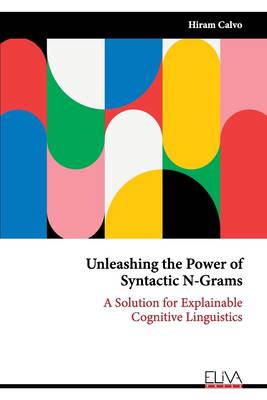
- Afhalen na 1 uur in een winkel met voorraad
- Gratis thuislevering in België vanaf € 30
- Ruim aanbod met 7 miljoen producten
- Afhalen na 1 uur in een winkel met voorraad
- Gratis thuislevering in België vanaf € 30
- Ruim aanbod met 7 miljoen producten
Zoeken
Unleashing the Power of Syntactic N-Grams
A Solution for Explainable Cognitive Linguistics
Hiram Calvo
Paperback | Engels
€ 73,45
+ 146 punten
Omschrijving
Recently Natural Language Processing has seen the rise of computationally expensive (although effective) technologies to deal with the nuances of language. While traditional approaches seem to be less popular nowadays, there are several advantages that these may provide. In particular, n-gram-based models foster the explainability of Artificial Intelligence-based algorithms. This is why this book was conceived.
Recent studies applied to related areas (Sidorov, 2013) show that syntactic n-grams can help to improve several tasks, since they consider not only the expressions' words, but also their part of speech and the long distance connections that they can capture. A disadvantage of syntactic n-grams might be the need of a parser, which can be slow and may not be available for all languages, so that the benefits of using this additional resource should be clear. In this work we present an in-depth research in order to present the strengths and weaknesses of using syntactic n-grams in a variety of applications. Some of them have been benefited from this approach, while others have just been scantly explored. Among others, we present several techniques for textual entailment, error correction, and fake news detection. Different kinds of syntactic n-grams (sn-grams) are evaluated: dependency-based sn-grams, and constituent-based sn-grams. We also evaluate these variants along with continuous and non-continuous sn-grams. We expect that this book helps our readers to appreciate the benefits of using n-grams and syntactic n-grams in a number of applications; those detailed in this book, and many others to be found in the vast field of Computational Linguistics.
Recent studies applied to related areas (Sidorov, 2013) show that syntactic n-grams can help to improve several tasks, since they consider not only the expressions' words, but also their part of speech and the long distance connections that they can capture. A disadvantage of syntactic n-grams might be the need of a parser, which can be slow and may not be available for all languages, so that the benefits of using this additional resource should be clear. In this work we present an in-depth research in order to present the strengths and weaknesses of using syntactic n-grams in a variety of applications. Some of them have been benefited from this approach, while others have just been scantly explored. Among others, we present several techniques for textual entailment, error correction, and fake news detection. Different kinds of syntactic n-grams (sn-grams) are evaluated: dependency-based sn-grams, and constituent-based sn-grams. We also evaluate these variants along with continuous and non-continuous sn-grams. We expect that this book helps our readers to appreciate the benefits of using n-grams and syntactic n-grams in a number of applications; those detailed in this book, and many others to be found in the vast field of Computational Linguistics.
Specificaties
Betrokkenen
- Auteur(s):
- Uitgeverij:
Inhoud
- Aantal bladzijden:
- 214
- Taal:
- Engels
Eigenschappen
- Productcode (EAN):
- 9789994980116
- Verschijningsdatum:
- 6/05/2022
- Uitvoering:
- Paperback
- Formaat:
- Trade paperback (VS)
- Afmetingen:
- 152 mm x 229 mm
- Gewicht:
- 290 g

Alleen bij Standaard Boekhandel
+ 146 punten op je klantenkaart van Standaard Boekhandel
Beoordelingen
We publiceren alleen reviews die voldoen aan de voorwaarden voor reviews. Bekijk onze voorwaarden voor reviews.








